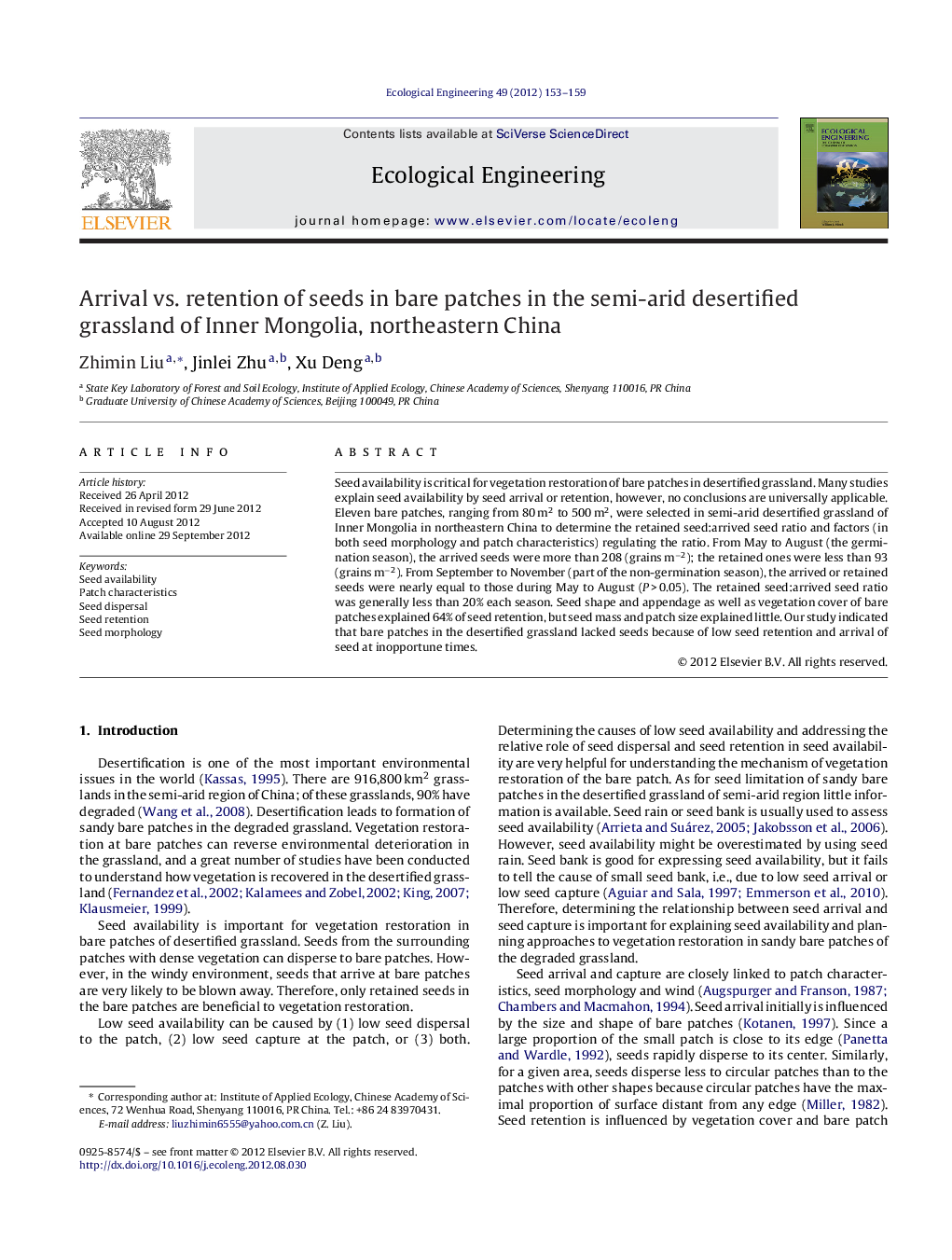| Article ID | Journal | Published Year | Pages | File Type |
|---|---|---|---|---|
| 4389898 | Ecological Engineering | 2012 | 7 Pages |
Abstract
Seed availability is critical for vegetation restoration of bare patches in desertified grassland. Many studies explain seed availability by seed arrival or retention, however, no conclusions are universally applicable. Eleven bare patches, ranging from 80 m2 to 500 m2, were selected in semi-arid desertified grassland of Inner Mongolia in northeastern China to determine the retained seed:arrived seed ratio and factors (in both seed morphology and patch characteristics) regulating the ratio. From May to August (the germination season), the arrived seeds were more than 208 (grains mâ2); the retained ones were less than 93 (grains mâ2). From September to November (part of the non-germination season), the arrived or retained seeds were nearly equal to those during May to August (P > 0.05). The retained seed:arrived seed ratio was generally less than 20% each season. Seed shape and appendage as well as vegetation cover of bare patches explained 64% of seed retention, but seed mass and patch size explained little. Our study indicated that bare patches in the desertified grassland lacked seeds because of low seed retention and arrival of seed at inopportune times.
Related Topics
Life Sciences
Agricultural and Biological Sciences
Ecology, Evolution, Behavior and Systematics
Authors
Zhimin Liu, Jinlei Zhu, Xu Deng,
